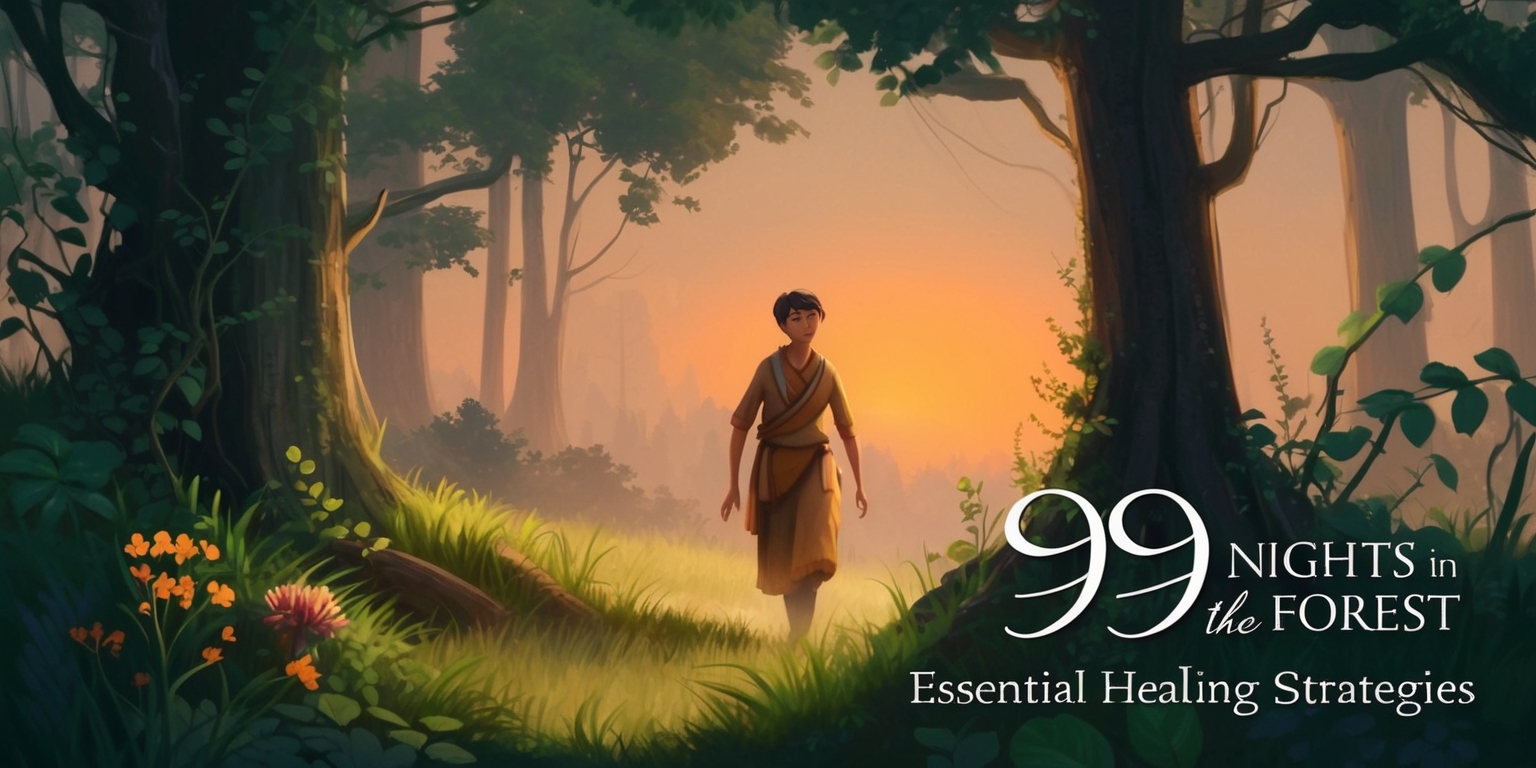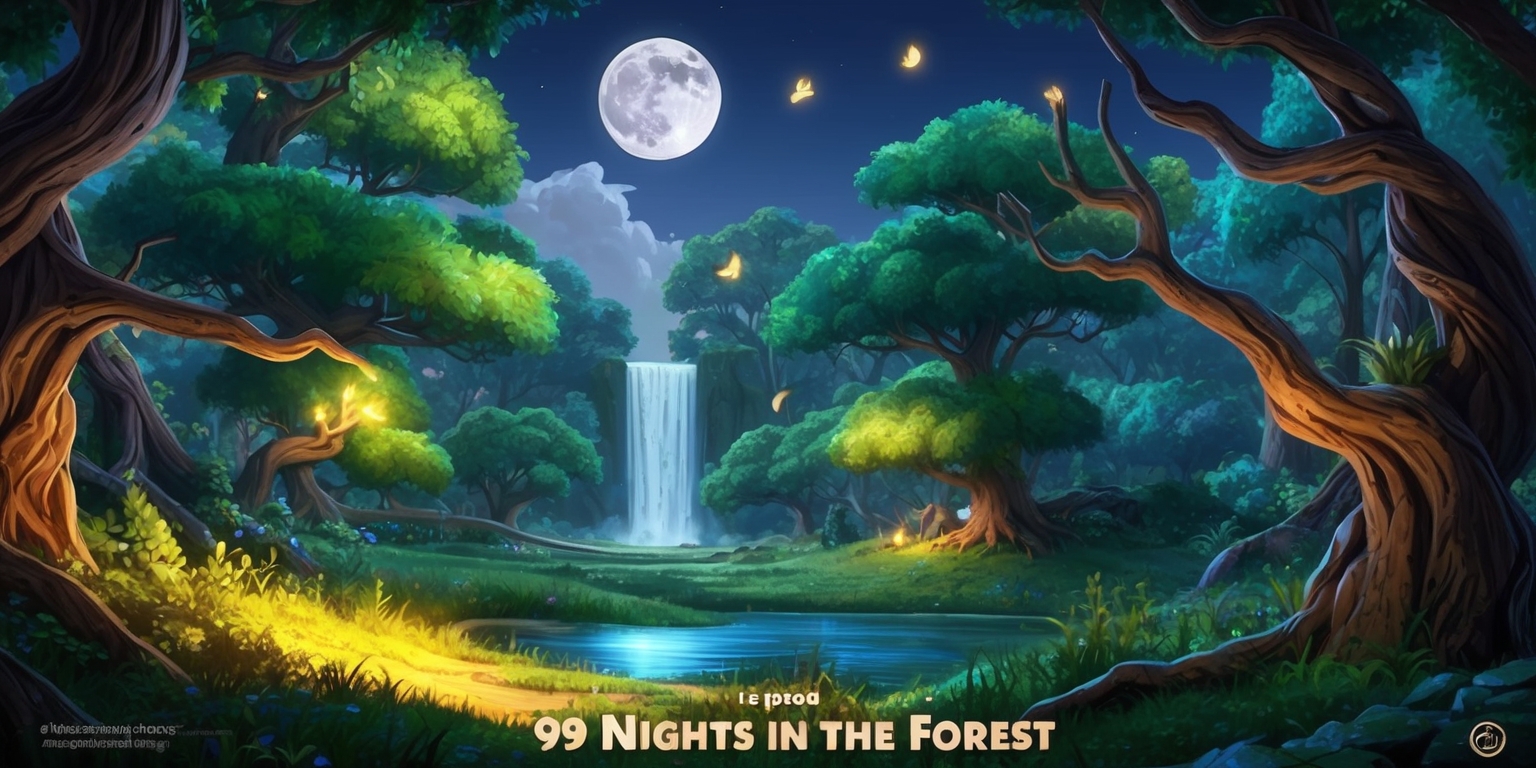Navigating the Wilderness: Essential Healing Strategies in 99 Nights in the Forest
Oct-02-2025

Step into the captivating realm of 99 Nights in the Forest invites players into a landscape in which each choice might ultimately determine the outcome between a fleeting moment of relief and a rapid descent into peril. As players traverse this challenging environment, they are forced to make strategic choices about resource management and survival tactics. One of the most critical elements in this journey is acquiring healing items that not only sustain life but also serve as a tactical advantage in the dynamic encounters that await. The need for reliable healing is ever-present, and understanding how to obtain these essential items forms a cornerstone of gameplay in this intense and ever-evolving forest encounter.
Embracing the Unforgiving Wilderness
In the harsh surroundings of 99 Nights in the Forest, personal survival is a constant challenge, and every resource counts. Players are compelled to adopt an acute sense of awareness as they venture deeper into the wilderness, where dangers lurk in every shadow. Basic survival tools, including healing items, become critical companions that help counteract the relentless trials of the environment. The game’s design demands that players gather and manage items that can mitigate the persistent threat of damage and adverse conditions. As one navigates the digitally rendered forest, the role of healing mechanisms intertwines seamlessly with exploration and the necessity to react swiftly to environmental hazards.
The Strategic Importance of Healing Items
Healing items in the game are not merely cosmetic additions; they are fundamental to maintaining a competitive edge against the challenges presented by the realm. When unexpected encounters or environmental obstacles result in injury, these items provide the crucial boost needed to sustain momentum during gameplay. The deliberate integration of a health management system in 99 Nights in the Forest places a premium on collecting versatile healing supplies. Players learn quickly that every moment spent without proper health restoration could turn a promising run into a desperate scramble for renewed resilience. These tactical provisions encourage players to prioritize collecting and strategically using them in situations where every second matters.
The Advantage of Choosing the Medic Class
Opting for the Medic class introduces a strategic layer that significantly enhances a player's ability to manage their health in the unforgiving forest setting. This choice is a tactical masterstroke, offering an immediate supply of healing items that can be instrumental in critical moments. With the Medic class costing a moderate sum of in-game currency, unlocking this option opens up a pathway to preemptively counteract damage. By starting each excursion with a small bounty of these vital resources, players can actively prepare for the inevitable challenges that occur throughout the game. The pre-emptive advantage provided by this class illustrates the thoughtful balance between cost and survival benefit embedded within the gameplay mechanics.
Discovering Hidden Treasures Among the Ruins

The detailed design of 99 Nights in the Forest encourages exploration, where every building and secluded chest becomes a potential trove of life-saving items. Throughout the sprawling environment, players will come across countless chests scattered amidst the dense foliage and abandoned structures. These containers not only house healing resources but also enrich the player's experience by embedding a sense of mystery and reward in every turn. The act of looting is both an exercise in risk and reward, as every opened chest has the potential to provide items that can alter the course of an encounter. Consequently, meticulous exploration of the area brings excitement and reinforces the ever-present need for vigilance and preparedness.
Harnessing Crafting for Essential Supplies
Crafting in 99 Nights in the Forest introduces a layer of creativity and resourcefulness into the gameplay, where survival is closely tied to the player's ability to combine available materials. The crafting system allows for the production of healing items using specific in-game resources, blending strategy with the art of resource management. To create these indispensable items, players must collect components such as Bunny Foot and Wolf Pelt, which serve as the building blocks of their emergency supplies. Although these resources are not always easily acquired, the process of gathering them adds a rewarding depth to each run. The crafted healing items not only symbolize a player's ingenuity but also create opportunities for strategic planning and adaptive gameplay.
Exploring Camp Features and Special Buildings
As players progress and develop their base of operations, special locations such as hospitals become accessible in the forest. These uniquely designed buildings, marked by their distinct red and white brick exteriors, add a structural sense of safety and order to the otherwise chaotic wilderness. Once the campfire reaches a certain level of development, indicated by an upgrade to level 5, players can venture into these specialized areas with the promise of finding additional life-giving items. The integration of these buildings into the game environment provides a systematic and visually appealing method of resource replenishment, emphasizing that survival in 99 Nights in the Forest is as much about strategic base management Since it focuses on both intense battles and the thrill of discovery.
Resource Collection and Tactics Under Pressure
In the heat of intense gameplay, every resource matters, and the ability to collect and utilize them efficiently can define the difference between continued survival and an abrupt end to a run. Bandages, as a versatile healing item, play a critical role in this balancing act. They are Engineered to perform reliably across a range of different conditions situations, enabling a swift response to unexpected setbacks. Whether gathered from looted chests or collected from strategic locations in the forest, these items serve as a buffer against sustained damage and adverse effects. Emphasizing the importance of resource management, the game challenges players to constantly evaluate and re-assess their inventory, keeping an attentive eye on both offense and defense during the ever-shifting gameplay dynamics.
Team Collaboration and Shared Survival Strategies
While the forest is unforgiving and riddled with challenges, solo play is not the only path to survival. The game encourages collaboration, suggesting that players might help each other by sharing crucial healing supplies when the need arises. In situations where teammates are injured or facing overwhelming adversities, the cautious distribution and sharing of resources like healing items foster a strong sense of team interplay. Such cooperative dynamics introduce another strategic dimension, emphasizing the crucial role of clear dialogue and shared encouragement throughout the gameplay. This shared approach to resource management not only elevates the communal challenge but also reinforces the notion that every healing item is a valued asset for both individual survival and collective progress.
Immersive Aesthetic Experience and Game Design
The overall aesthetics of 99 Nights in the Forest contribute significantly to the player’s immersive experience, with every visual detail carefully orchestrated to Conjure an atmosphere of ominous foreboding and mystique forest is rendered in a style that highlights both the beauty and brutality of nature, where dark shadows and fragmented light create a landscape full of opportunities and hidden threats. The design is enriched by a seamless integration of interactive elements such as chests, hospitals, and crafting stations, each contributing to a surreal yet coherent world. Visual cues and thematic color schemes not only guide players to important resources but also enhance the overall gameplay by adding layers of narrative depth and emotional response to the actions taken within the game.
Understanding the Crafting Dynamics and Its Impact
Crafting, as a core gameplay mechanic, allows players Rewritten version: "to actively engage in preserving their own existence." efforts by converting raw resources into practical healing items. The process involves combining components like Bunny Foot and Wolf Pelt at designated crafting areas, where each successful combination results in the production of a healing bandage. This system underscores the importance of resource conservation and precise planning, as every material gathered could be the key to withstanding future challenges. The crafting dynamics are intricately balanced to ensure that while resources may be scarce at times, ingenuity and strategic planning provide the players with multiple avenues to restore their health during the more perilous parts of their journey.
Engaging with the Game’s Everyday Challenges
Each run in 99 Nights in the Forest brings its own set of unexpected hurdles, emphasizing that survival is rarely about grand gestures, but rather a series of small, calculated decisions. The challenge of gathering bandages and managing health not only tests a player's resourcefulness and additionally their capacity to adjust when confronted by sudden risks. Throughout the gameplay, situations arise where moments of quick decision-making become pivotal. The interplay between risk assessment and resource allocation permeates every level of the narrative, making each step in the forest a blend of suspenseful exploration and tactical maintenance. This constant need for vigilance reminds players that in a realm where danger is omnipresent, even the smallest tool in one’s possession can have a significant impact.







